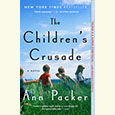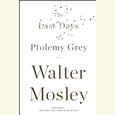Taking Real Action
Andrew Maraniss on his new series of biographies for young readers
Beginning with Strong Inside (2014), which told the story of Perry Wallace, the first Black player in SEC basketball, Andrew Maraniss’ work has placed sports in a larger social context. His subsequent books, including Games of Deception (2019), Singled Out (2021), and Inaugural Ballers (2022), have explored the many ways sports can serve as a mirror reflecting the best and worst aspects of our culture and its evolution over time. In a new series of biographies for young readers, Beyond the Game: Athletes Change the World, Maraniss features the positive social contributions of notable athletes, highlighting their influence and achievements outside the world of athletics.
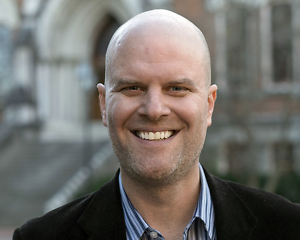
The first two volumes of the series, focused on basketball stars LeBron James and Maya Moore, will be released in March, coinciding with the paperback release of Inaugural Ballers and a 10th anniversary edition of Strong Inside. Maraniss answered questions from Chapter 16 by email.
Chapter 16: The intersection of sports, identity, and social justice has been at the core of your books for adults and teens. What were the challenges of bringing those themes to books for children?
Andrew Maraniss: Most sports biographies for children tend to focus on an athlete’s achievements in their chosen sport: obstacles overcome, turning points, big games, influential coaches or mentors, that sort of thing. There is a place for those kinds of books, but with this series I want to explore the ways that some athletes are using their platforms to help other people.
Despite efforts by some conservative activists and politicians to restrict the topics kids can read about, stories that deal honestly with real issues are exactly the kinds of books that many parents want their kids to read. The Beyond the Game series is for those families and children. The first two books in the series cover topics like two systems of justice, mass incarceration, police brutality, economic inequality, Black Lives Matter, public education, and voting rights. The challenge was writing about these topics in a way that is accessible to kids in first, second, or third grade. That’s not to say the subjects themselves are too complicated for that age group. Kids and families are living these issues every day, so how can reading about them be too heavy? It’s just a matter of how to tell the stories and introduce the topics in a way that young kids find entertaining and meaningful.
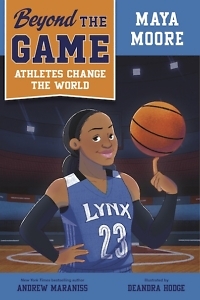 Chapter 16: Why begin the series with LeBron James and Maya Moore? What’s especially compelling about their stories?
Chapter 16: Why begin the series with LeBron James and Maya Moore? What’s especially compelling about their stories?
Maraniss: Maya Moore gave up her professional basketball career, while she was at the very pinnacle, to help free an innocent man from prison. LeBron James has one of the biggest platforms in the history of sports and has used it to speak out on important social issues despite calls for him to “shut up and dribble.” And he’s never forgotten where he came from, helping people in his hometown of Akron, Ohio, by starting a school for struggling students and safety net programs for low-income families.
I’m not interested in writing about athletes who are merely writing checks for a cause, recording public service announcements, or performing community service for the cameras. In both cases, I felt like Maya Moore and LeBron James were doing real, substantial work to help other people. That’s what the series is all about. This is not to say that athletes are role models in every aspect of their lives or that the people I write about in this series haven’t made — or won’t make — mistakes. But hopefully their willingness to take real action on behalf of others will be inspiring to the kids who read these books.
Chapter 16: The illustrations by DeAndra Hodge are simple but powerful, and they really complement the stories. Did you collaborate with her to define the look of the series?
Maraniss: DeAndra has done a fantastic job with the illustrations. My publisher and editor have handled most of the interaction and art direction, but I have had the opportunity to weigh in. I understand that with a series aimed at young children, the quality of the illustrations is really important, so I’m thrilled to be collaborating with DeAndra on this series. She’s very talented.
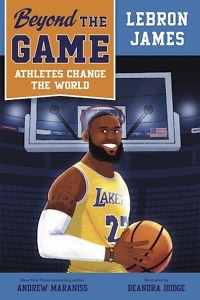 Chapter 16: Your body of work makes it clear that the world of sports has never been immune to political and social controversy, yet there’s still a common complaint that athletics should somehow be above all that. Why do you think so many people want sports to exist in a separate realm, free of real-world conflict?
Chapter 16: Your body of work makes it clear that the world of sports has never been immune to political and social controversy, yet there’s still a common complaint that athletics should somehow be above all that. Why do you think so many people want sports to exist in a separate realm, free of real-world conflict?
Maraniss: Sports is an escape from the real world for a lot of fans – me included. I love to watch a game, cheer for my team, and forget about everything else in my life for a couple of hours. But we have to acknowledge that often what is considered “normal” or apolitical is actually just a reflection of prevailing politics. Was a routine SEC basketball game before Perry Wallace desegregated the league in 1967 a political statement in and of itself? Yes. Was a typical high school in the 1950s that offered a basketball team for boys but not for girls reinforcing political norms? Yes.
At its best, sports is supposed to be a meritocracy, where anyone can compete and succeed based on talent alone. When it doesn’t actually work out that way, it’s plain for all to see. In that way, sports is the perfect vehicle to expose hypocrisy and systemic inequities. That makes some people uncomfortable. They yearn for the days when politics and sports were separate (sarcasm alert), like the 1930s when Adolf Hitler hosted the Olympics; like the early 1940s when MLB still barred Black players; like the 1950s when the Cincinnati Reds became the Redlegs so as not to be considered Communists; like the 1960s when Ole Miss canceled basketball games against Vanderbilt rather than play against an integrated team; like the 1970s when the NCAA fought against Title IX. The list goes on.
Chapter 16: You’ve spoken out against the Tennessee legislature’s ongoing attempts to restrict children’s access to allegedly “age-inappropriate” books. How alarmed are you by the current spate of book banning across the country, and what do you say to a parent who is genuinely concerned about the material their child is encountering at school or the public library?
Maraniss: The first thing I’d say is that the book banning movement and a parent’s genuine concern about a certain book their child may encounter have nothing to do with each other. Not every book is right for every reader. A parent could believe a book isn’t right for their child for any number of reasons, and there’s nothing necessarily wrong with that. But that same book might be just what another child needs. I think most people understand the difference between an individual family’s choice and an outright ban that restricts the rights of other students and families.
The book banning movement is a manufactured crisis that’s more about using political power to silence certain voices and limit discussion of certain topics. It’s directly linked to attacks on democracy, to attacks on public schools, and to racism and homophobia. These are not well-meaning people with a genuine interest in books, quality education, or “protecting” kids. It’s all very toxic and dangerous for our state and for our country.
***
Beyond the Game: Lebron James
By Andrew Maraniss
Viking Books for Young Readers
96 pages
$16.99
Beyond the Game: Maya Moore
By Andrew Maraniss
Viking Books for Young Readers
96 pages
$16.99

Maria Browning is a fifth-generation Tennessean who grew up in Erin and Nashville. Her work has appeared in Guernica, the Los Angeles Review of Books, Literary Hub, and The New York Times. She’s the editor of Chapter 16.



